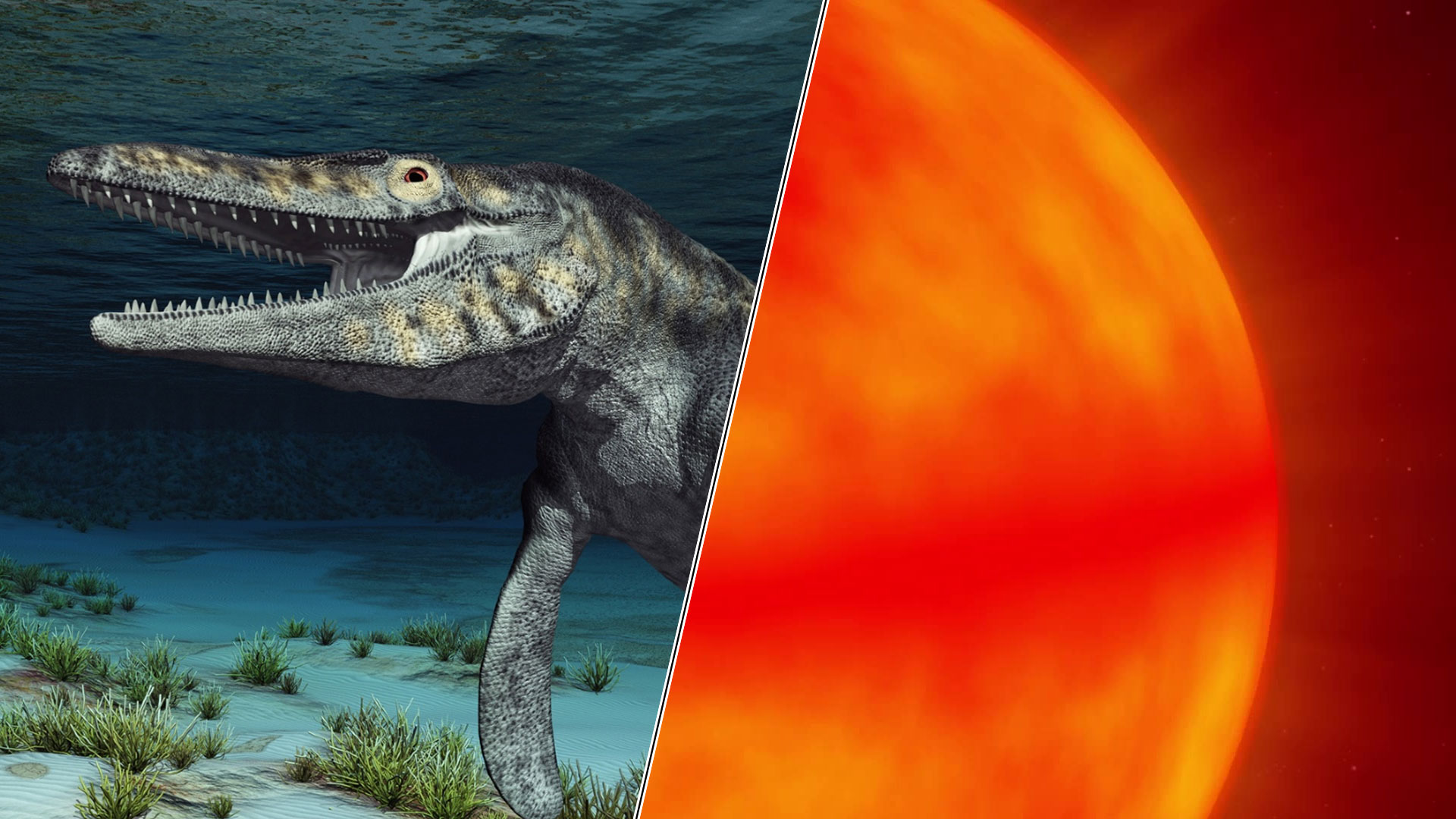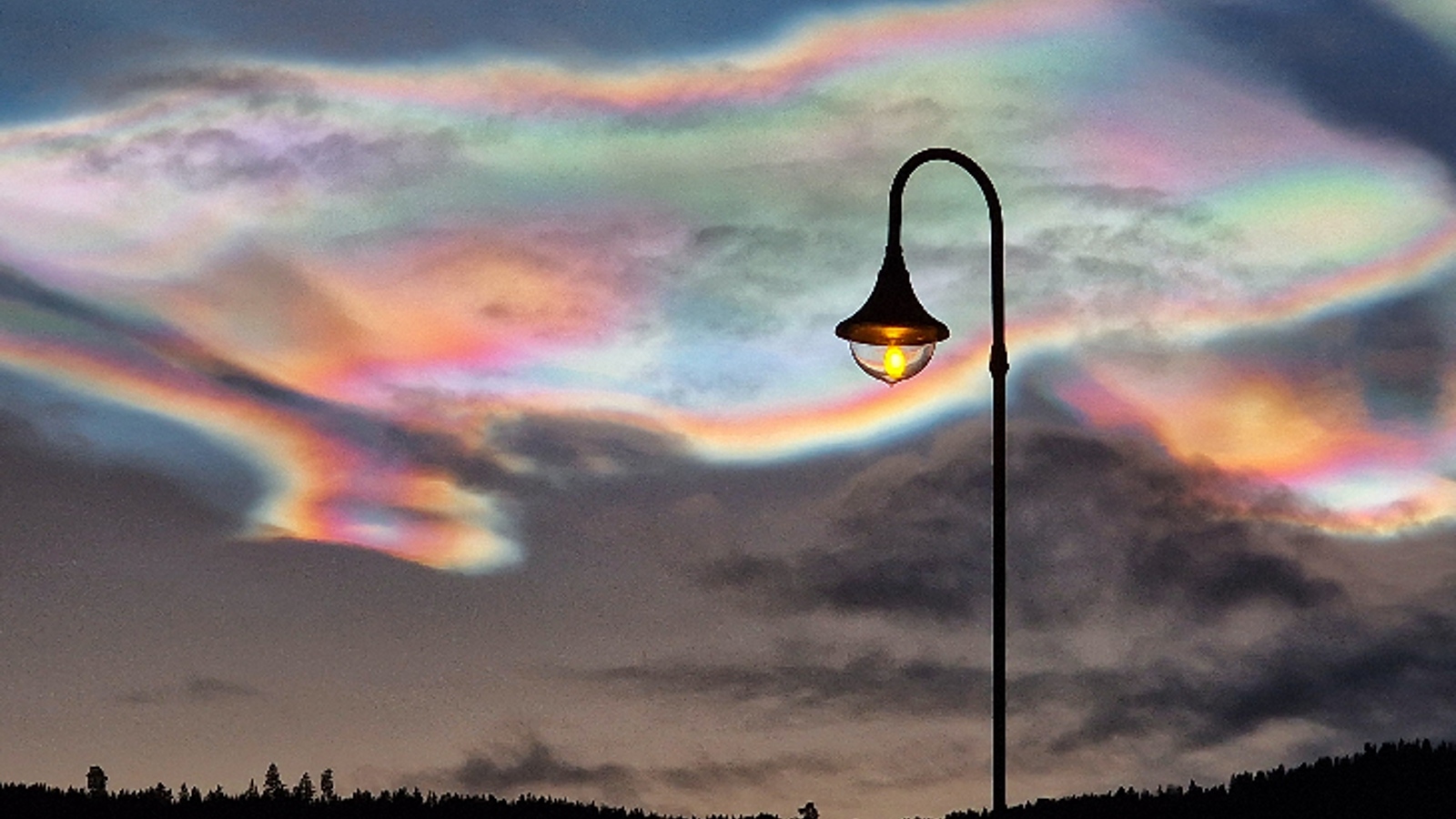Science news this week: An ancient 'blue dragon' and atom-size black holes
Dec. 24, 2023: Our weekly roundup of the latest science in the news, as well as a few fascinating articles to keep you entertained over the weekend.

This week in science news, we discovered the near-complete remains of a never-before-seen mosasaur that dominated the ancient Pacific Ocean, learned of atom-size black holes that could be devouring stars from the inside out, and investigated "no burp syndrome," which causes flatulence and "awkward gurgling."
The holiday season may be in full swing, but the world of science news never sleeps — and one of our biggest stories this week was the discovery of an ancient sea monster unlike anything ever seen. The prehistoric predator, which researchers have named "blue dragon," has an unusual body plan that sets it apart from its extinct relatives, and it's thought to have roamed the Pacific Ocean around 72 million years ago.
Further back in Earth’s history, about 510 million years ago, the planet underwent a seismic shift that decimated 45% of all animals in the ocean. This was the first great extinction, and while the prevailing view has been that this sudden die-off was caused primarily by the rapid spread of low-oxygen conditions, a new study suggests it could have been supercharged by a surge of nauseating chemical gas called hydrogen sulfide that choked life out of the sea.
In another seismic shift, the volcano that had been threatening to erupt in Iceland finally blew in explosive fashion, ending a long wait requiring the evacuation of a whole town, while on the other side of the planet, we explored a "spectacular" chain of ancient underwater volcanoes on the Antarctic ocean floor.
And in space news, research suggests that atom-size black holes created mere moments after the Big Bang may have been captured by stars — and are now being forced to eat their way out. We also heard of a strange "slide whistle" fast radio burst that was picked up by an alien-hunting telescope, found a key ingredient for life gushing out of Saturn's icy moon Enceladus, and saw the Hubble Space Telescope capture the "forbidden" light of a distant spiral galaxy.
At the intersection of health and technology, we learned how biased artificial intelligence could make doctors' diagnoses less accurate and saw an ingenious wireless charger that sits under the skin and could one day power medical devices before dissolving into the body.
And finally, spare a thought for those who have a rare condition known as retrograde cricopharyngeus dysfunction. Also known as "no burp" syndrome, the uncomfortable ailment leaves people unable to burp, thus causing bloating, excessive flatulence and loud gurgling noises in their necks and torsos.
Get the world’s most fascinating discoveries delivered straight to your inbox.
The best of 2023
It was an incredible year for science, with more breakthroughs and discoveries than we could possibly cram into one article — which is why we've made a whole bunch of them. Check out the end-of-year roundups published so far, and be sure to check back on Live Science for more wonderful science stories.
- 8 of the most breathtaking space images of 2023
- 11 best fossil discoveries that aren't dinosaurs in 2023
- 18 brain studies that blew our minds in 2023
- 10 out-of-this-world solar system discoveries made in 2023
- 10 jaw-dropping dinosaur fossils unearthed in 2023
Follow Live Science on social media
Want more science news? Follow our Live Science WhatsApp Channel for the latest discoveries as they happen. It's the best way to get our expert reporting on the go, but if you don't use WhatsApp we’re also on Facebook, X (formerly Twitter), Flipboard, Instagram, TikTok and LinkedIn.
Picture of the week
Spectacular rainbow-colored clouds shimmered in the skies over and around the Arctic for more than three days this week, thanks to an unusual cold snap in the upper atmosphere. Even more of these technicolor treats could appear during the next few months, experts say.
The colorful clouds, known as polar stratospheric clouds, were spotted high in the sky above parts of Norway, Sweden, Finland and Alaska, and even as far south as Scotland. This photo was taken by photographer Ramunė Šapailaitė, who captured staggering photos of the rare phenomenon above Gran, in southern Norway.
Sunday reading
- How many times has the sun traveled around the Milky Way? Well, that's not so easy to answer.
- This remarkable image of a fish catching a lift on a jellyfish elevator is one of the winners of The Royal Society Publishing Photography Competition.
- When did Australia become a continent?
- Meet the tufted ground squirrel, the Borneo rodent once believed to disembowel deer and feast on their organs.
- Why is frankincense associated with Christmas and medical treatments?
- The final full moon of the year rises this Christmas. Here's what to expect.
- Breathtaking photos from the recent volcanic eruption in Iceland show a stunning wall of lava.
- If you think putting on a thick coat in the winter is a change, you should see these color-changing animals adapt to colder weather.
Live Science long read
Something is awry in our expanding cosmos. Nearly a century ago, the astronomer Edwin Hubble discovered the balloon-like inflation of the universe and the accelerating rush of all galaxies away from each other. Following that expansion backward in time led to our current best understanding of how everything began — the Big Bang.
But over the past decade, an alarming hole has been growing in this picture: Depending on where astronomers look, the rate of the universe's expansion (a value called the Hubble constant) varies significantly.
Now, on the second anniversary of its launch, the James Webb Space Telescope has cemented the discrepancy with stunningly precise new observations that threaten to break the standard model of cosmology. The question is, can it be fixed?

Alexander McNamara is the Editor-in-Chief at Live Science, and has more than 15 years’ experience in publishing at digital titles. In 2024 he was shortlisted for Editor of the Year at the Association of British Science Writers awards for his work at Live Science. He has previously worked at New Scientist and BBC Science Focus.




